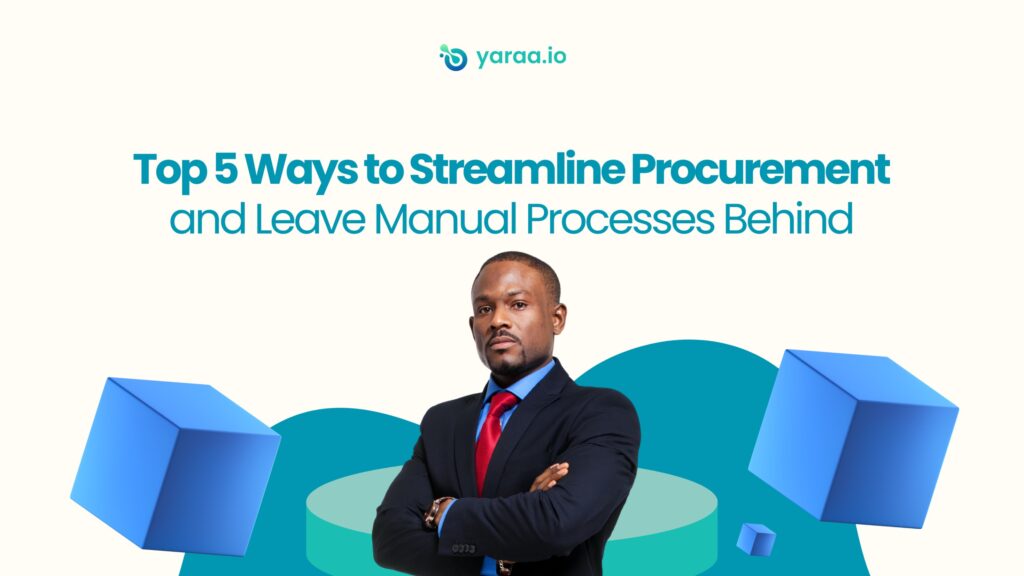Procurement is the backbone of every organization. Whether it’s sourcing raw materials, purchasing services, or managing supplier contracts, procurement decisions directly affect efficiency, costs, and competitiveness.
Yet, in 2025, many businesses are still bogged down by manual procurement processes — stacks of paperwork, endless email threads, lost approvals, and unnecessary delays. What used to be acceptable in a slower-paced environment is now a major roadblock in today’s fast-moving business world.
So, how do you fix it? How do you move from outdated, manual procurement to a modern, streamlined process that delivers speed, accuracy, and value?
Let’s break it down.
1. Embrace eProcurement Solutions
One of the most effective steps you can take is to transition to an eProcurement platform.
Manual procurement often relies on scattered spreadsheets, shared drives, and back-and-forth emails. This makes it hard to keep track of purchase requests, invoices, or supplier communication. Errors slip through the cracks, and procurement teams waste time chasing paperwork instead of focusing on strategy.
With eProcurement:
- Repetitive tasks are automated.
- All procurement activities are centralized in one platform.
- Audit trails and records are easy to find.
- Managers have better visibility across the supply chain.
This isn’t just about saving time — it’s about gaining control and ensuring decisions are made based on accurate, real-time data.
2. Implement Workflow Automation
Think about how many hours are lost waiting for approvals. A procurement request might sit in someone’s inbox for days before moving forward. Meanwhile, projects are delayed, and costs climb.
Workflow automation fixes this.
By designing predefined approval processes, you can ensure purchase requests automatically route to the right people. Escalation rules keep things moving if someone forgets to approve. This reduces bottlenecks, eliminates repetitive follow-ups, and ensures the procurement cycle runs smoothly.
For procurement professionals, that means more time spent on vendor negotiations, contract management, and strategy — not chasing signatures.

3. Leverage Data Analytics
Procurement isn’t just about transactions — it’s about insights.
When done manually, organizations often lack visibility into spending patterns, supplier reliability, or contract compliance. Decisions are made reactively, without data to back them up.
With advanced procurement analytics, you can:
- Spot cost-saving opportunities.
- Identify supplier risks early.
- Track performance against KPIs.
- Ensure compliance with internal policies and external regulations.
The data tells a story. The smarter you are at reading it, the more value you can unlock from procurement.
Read this – https://www.yaraa.io/blog/563-10-best-ai-powered-procurement-automation-software-solutions
4. Enhance Supplier Collaboration
Procurement is a two-way street. Strong supplier relationships can mean better pricing, more reliable delivery, and even innovation partnerships. Weak ones, on the other hand, can lead to constant firefighting.
Modern procurement solutions provide supplier portals where vendors can:
- Submit invoices digitally.
- View real-time order updates.
- Access payment timelines.
- Communicate directly with procurement teams.
This kind of transparency reduces misunderstandings, accelerates transactions, and fosters trust. It also makes procurement less adversarial and more collaborative, creating a win-win environment.

5. Foster a Culture of Continuous Improvement
Finally, procurement transformation isn’t a one-time project. It’s an ongoing journey.
Encourage your team to constantly evaluate processes, measure results, and share feedback. What worked last quarter may need tweaking this quarter. By building a culture of continuous improvement, you’ll keep procurement aligned with organizational goals, market shifts, and evolving risks.
This is also how you future-proof your procurement function — by making it agile, adaptable, and always ready for what’s next.
Conclusion
Manual procurement may have worked in the past, but in today’s fast-paced, competitive world, it slows organizations down. By embracing eProcurement, automating workflows, using analytics, enhancing supplier collaboration, and committing to continuous improvement, procurement professionals can unlock higher efficiency, greater savings, and stronger supplier partnerships.
The move from manual to modern procurement isn’t just about technology — it’s about strategy, culture, and growth.
Are you ready to transform your procurement strategy? Let’s connect and discuss how eProcurement solutions can make a difference for your organization.
